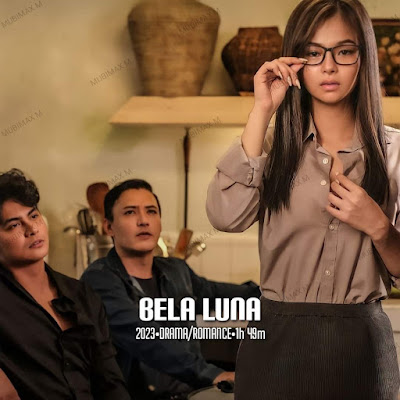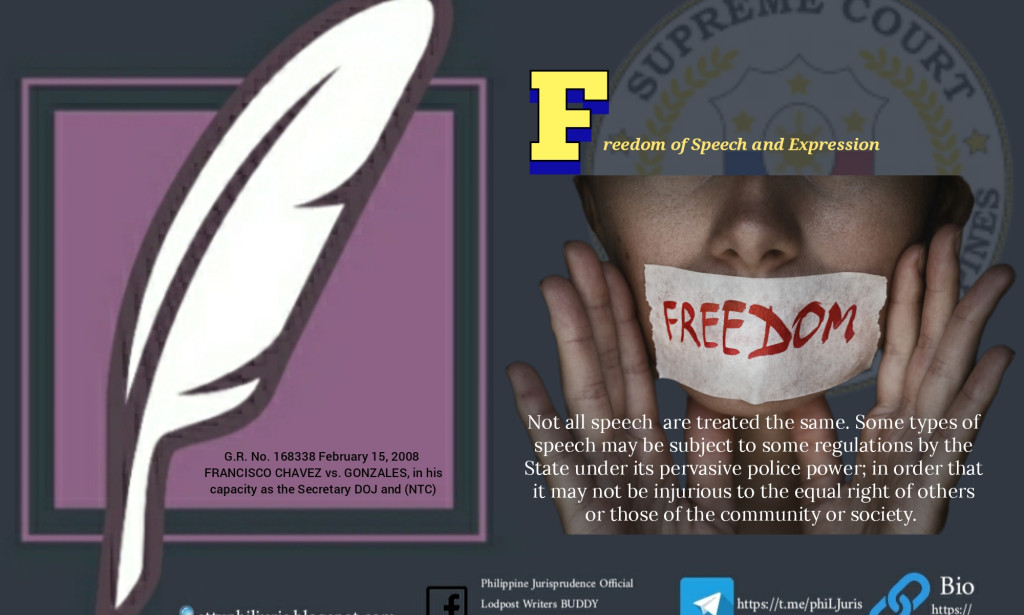PREVAILING DOCTRINE: Restrictions on Freedom of Speech and Expression.
Not all speech are treated the same. Some types of speech may be subject to some regulations by the State under its pervasive police power; in order that it may not be injurious to the equal right of others or those of the community or society.
(Photo: "lady freedom" not ours. Credit belongs to the rightful owner).

Generally, restraints on freedom of speech and expression are evaluated by either or a combination of three tests, to wit:
(a) the dangerous tendency doctrine;
(b) the balancing of interests tests; and
(c) the clear and present danger rule
As articulated in our jurisprudence, we have applied [either] the dangerous tendency doctrine or clear and present danger test to resolve free speech challenges. More [recently, we have concluded] that we have generally adhered to the [clear and present danger test].
FRANCISCO CHAVEZ vs. GONZALES, in his capacity as the Secretary DOJ and (NTC) G.R. No. 168338.
Discussion:
In this jurisdiction, it is established that freedom of the press is crucial and so inextricably woven into the right to free speech and free expression, that any attempt to restrict it must be met with an examination so critical that [only a danger that is clear and present would be allowed to curtail it]. (Emphasis supplied)
Ads.
Simply scroll down to continue reading this article.
 |
| 2023 Bar Exam Quiz Cards Reviewer for ₱150 - ₱500. |
Ads.
 |
| ▶️ Watch here |
Ads.
| ▶️ Watch here |
Ads.
.jpeg) |
| ▶️ Watch here |
ads.
LAW BOOK FLAGS / FILING TABS
![]() Shop here: https://go.shopple.co/spm01i
Shop here: https://go.shopple.co/spm01i
More @ https://shopple.co/Lex-curiae
Visit ![]() "Bar techniques"
"Bar techniques"![]() : Abubot ni atorni
: Abubot ni atorni
 Laptop and Bags for Bar Examinations SHOP NOW!
Laptop and Bags for Bar Examinations SHOP NOW!
More discounted products! Follow us on shopple store (visit laptop and bags section)
Indeed, we have not wavered in the duty to uphold this cherished freedom. We have struck down laws and issuances meant to curtail this right, as in Adiong v. COMELEC, Burgos v. Chief of Staff, Social Weather Stations v. COMELEC, and Bayan v. Executive Secretary Ermita.
When on its face, it is clear that a governmental act is nothing more than a naked means to prevent the free exercise of speech, it must be nullified.
NOTE:
All speech are not treated the same. Some types of speech may be subjected to some regulation by the State under its pervasive police power, in order that it may not be injurious to the equal right of others or those of the community or society.
The difference in treatment is expected because the relevant interests of one type of speech, e.g., political speech, may vary from those of another, e.g., obscene speech.
Distinctions have therefore been made in the treatment, analysis, and evaluation of the permissible scope of restrictions on various categories of speech. We have ruled, for example, that in our jurisdiction slander or libel, lewd and obscene speech, as well as "fighting words" are not entitled to constitutional protection and may be penalized.
Generally, restraints on freedom of speech and expression are evaluated by either or a combination of three tests, to wit:
The dangerous tendency doctrine.
(a) the dangerous tendency doctrine which permits limitations on speech once a rational connection has been established between the speech restrained and the danger contemplated;
The balancing of interests tests.
(b) the balancing of interests tests, used as a standard when courts need to balance conflicting social values and individual interests, and requires a conscious and detailed consideration of the interplay of interests observable in a given situation of type of situation; and
(c) the clear and present danger rule which rests on the premise that speech may be restrained because there is substantial danger that the speech will likely lead to an evil the government has a right to prevent.
This rule requires that the evil consequences sought to be prevented must be substantive, "extremely serious and the degree of imminence extremely high."
G.R. No. 168338 February 15, 2008
FRANCISCO CHAVEZ vs. GONZALES, in his capacity as the Secretary DOJ and (NTC).
We hope you are all well and studying diligently for the upcoming Bar Exams. Please consider supporting in keeping our website up to date for future reference. This will allow us to continue assisting our law students and future Bar candidates by providing them with useful content to aid in their legal studies. Read more






You must be logged in to post a comment.